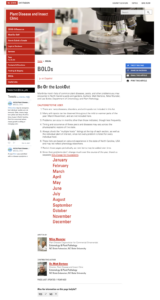Pest Alert – Landscape Issues in November
go.ncsu.edu/readext?831643
en Español / em Português
El inglés es el idioma de control de esta página. En la medida en que haya algún conflicto entre la traducción al inglés y la traducción, el inglés prevalece.
Al hacer clic en el enlace de traducción se activa un servicio de traducción gratuito para convertir la página al español. Al igual que con cualquier traducción por Internet, la conversión no es sensible al contexto y puede que no traduzca el texto en su significado original. NC State Extension no garantiza la exactitud del texto traducido. Por favor, tenga en cuenta que algunas aplicaciones y/o servicios pueden no funcionar como se espera cuando se traducen.
Português
Inglês é o idioma de controle desta página. Na medida que haja algum conflito entre o texto original em Inglês e a tradução, o Inglês prevalece.
Ao clicar no link de tradução, um serviço gratuito de tradução será ativado para converter a página para o Português. Como em qualquer tradução pela internet, a conversão não é sensivel ao contexto e pode não ocorrer a tradução para o significado orginal. O serviço de Extensão da Carolina do Norte (NC State Extension) não garante a exatidão do texto traduzido. Por favor, observe que algumas funções ou serviços podem não funcionar como esperado após a tradução.
English
English is the controlling language of this page. To the extent there is any conflict between the English text and the translation, English controls.
Clicking on the translation link activates a free translation service to convert the page to Spanish. As with any Internet translation, the conversion is not context-sensitive and may not translate the text to its original meaning. NC State Extension does not guarantee the accuracy of the translated text. Please note that some applications and/or services may not function as expected when translated.
Collapse ▲Be On the LookOut (BOLO) pest management updates from the NC State University Plant Disease and Insect Clinic (PDIC) are a great resource for keeping your garden healthy. Mike Munster, Plant Disease Diagnostician for Commercial Ornamentals, and Matt Bertone, PhD. posts these monthly pest management updates. They also do a live online class each month as well. Here is the November BOLO message.
Turfgrasses
- Fairy ring (all turfgrasses)
- Large patch (bermudagrass/zoysiagrass/centipedegrass/St. Augustinegrass)
- Leaf spot caused by Bipolaris/Drechslera (bluegrasses/bermudagrass)
- Microdochium patch (Kentucky bluegrass/bermudagrass) Red thread (Kentucky bluegrass/fescue/ryegrass)
- Rust (Kentucky bluegrass/fescue/St. Augustinegrass/zoysiagrass)
- Yellow patch (fescue/Kentucky bluegrass/ryegrass)

Woody Ornamentals
- Multiple hosts: Phytophthora root rot, Armillaria root rot (may still produce mushrooms early in the month), Botryosphaeria dieback, sooty mold, conks of wood decay fungi such as Pseudoinonotus dryadeus, improper planting
- Multiple shrub species: root-knot nematodes
- Arborvitae: Phytophthora root rot, Armillaria root rot
- Azalea: Phytophthora root rot, Armillaria root rot, Phomopsis dieback, stunt nematode
- Boxwood: Phytophthora root rot, boxwood blight, boxwood stem canker (Colletotrichum theobromicola), nematodes (lesion, root-knot, spiral)
- Cherry-laurel: shot-hole
- Indian hawthorn: Entomosporium leaf spot
- Japanese black pine: pine wilt nematode
- Japanese holly: black root rot, Armillaria root rot
- Junipers: Phytophthora root rot (except Eastern red cedar), Armillaria root rot
- Leyland cypress: cypress (Seiridium) canker, Botryosphaeria canker/dieback
- Ligustrum (privet): Cercospora (Pseudocercospora) leaf spot
- Magnolia, Southern: algal leaf spot
- Oaks: Biscogniauxia canker Red-tip photinia: Entomosporium leaf spot
- Rose: Armillaria root rot, crown gall, black spot, rose rosette
- Spruce: Rhizosphaera needle cast
Herbaceous Ornamentals (Perennials, Bedding Plants)
- Multiple species: frost damage
- Liriope: anthracnose on leaf tips, Fusarium crown rot
- Pansy/viola: Phytophthora root and crown rot, black root rot, Pythium root rot
Fruits & Nuts
- Pecan: scab
Vegetables & Herbs
- Multiple species: frost damage, nutrient deficiency
- Cole crops: black rot, white leaf spot of turnip and
- Swiss chard, downy mildew, Alternaria leaf spot
Arthropods Associated with Multiple Plants
- Fall cankerworms (adults)
- Bagworms (Thyridopteryx ephemeraeformis; bags often containing eggs)




